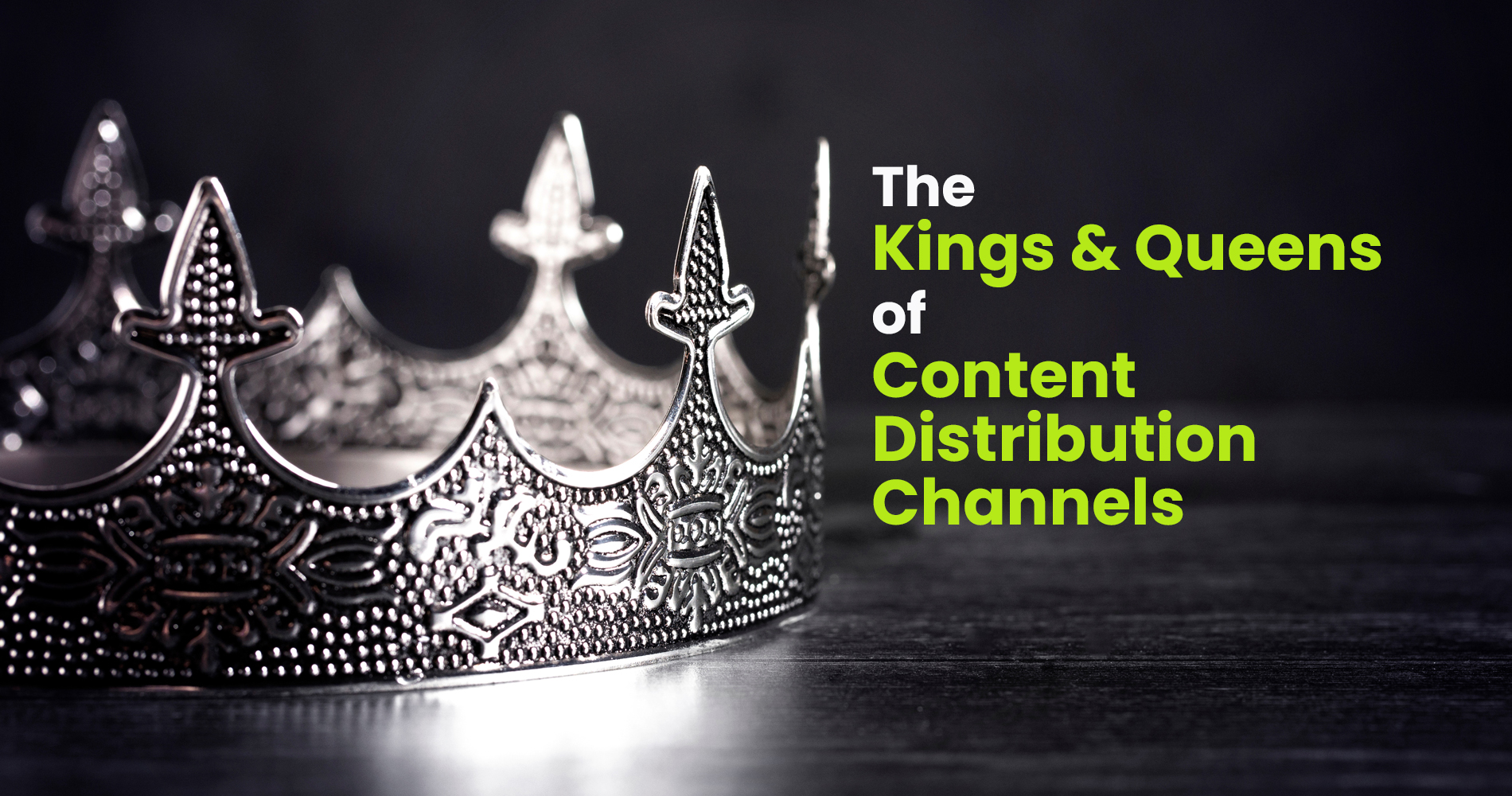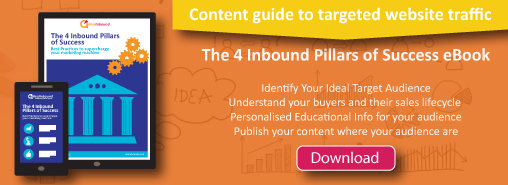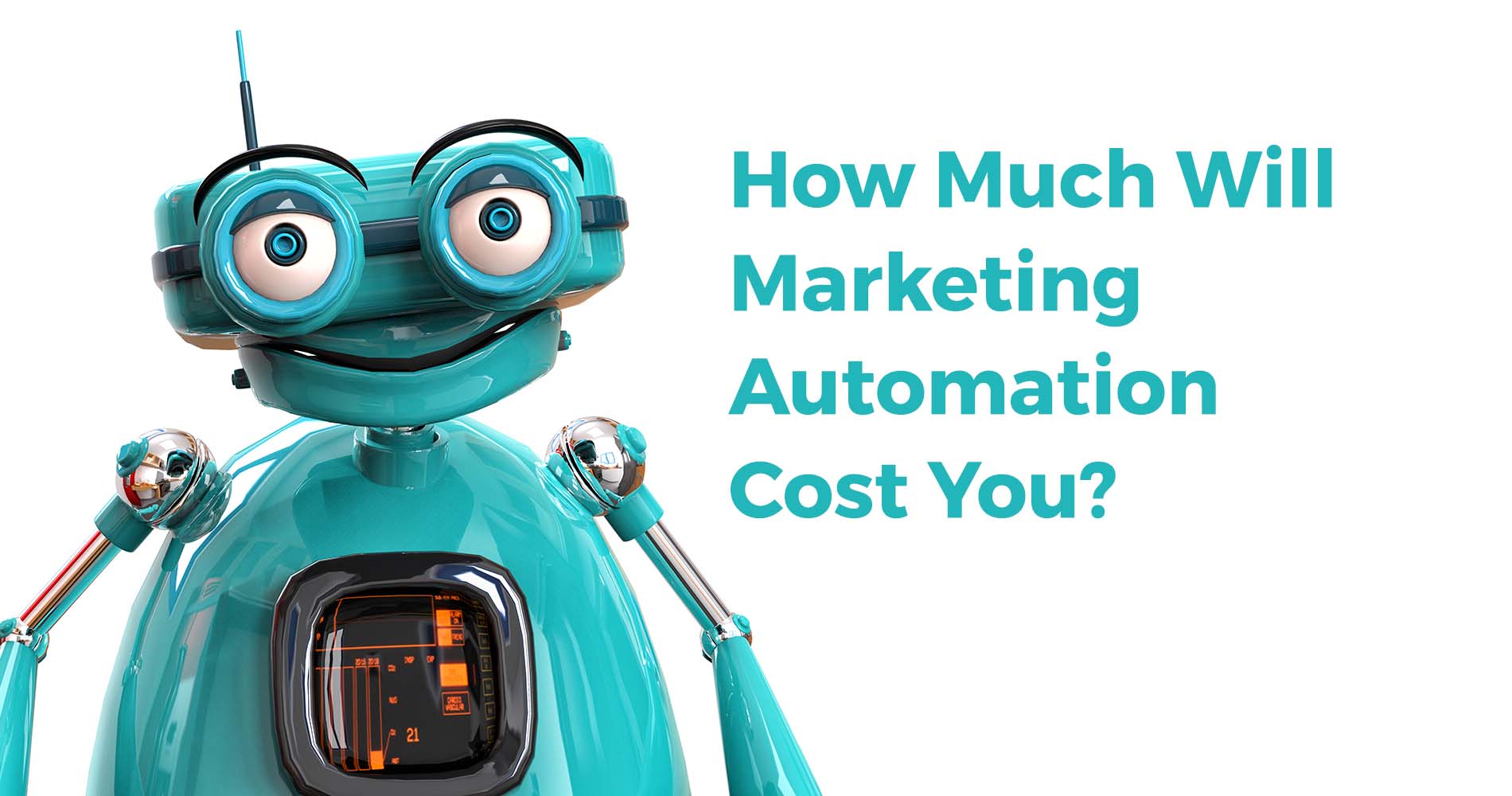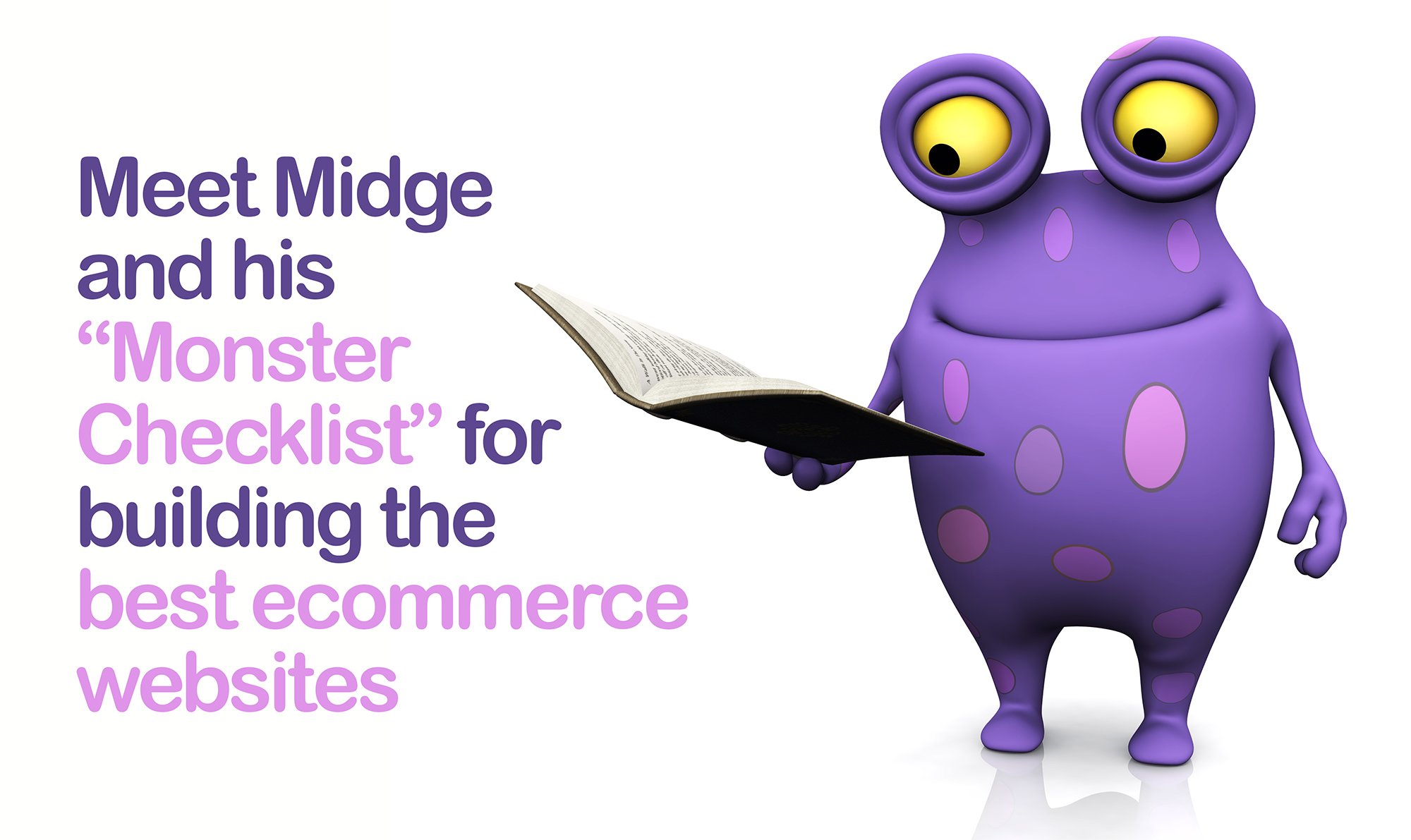No one ever said creating excellent content is an easy task, and it requires careful finessing, but if you have something truly awesome to share, it's going to reward your time spent on the task. However, even though the result might be rock and roll, marketers often overlook one vital thing – promotion. Once you've completed a piece of work that you're prepared to release into the wild, some extra marketing is required for its success as part of any successful social/marketing strategy - whether or not this has been planned!
Any product manager worth their salt knows that content distribution channels are the very essence of how products are marketed to a set target audience. A dominant trait of such channels is how they can be leveraged by relevantly sharing any given piece of content across multiple websites in order to reach more potential customers at one time. If a product's 'awesomeness' has yet to spread, creative ways of getting it in front of the right eyes will rise in importance for any would-be entrepreneur who hopes for their idea to succeed as a business in its own right.
You're not going to believe this, but if you want to successfully distribute your marketing content, there's a cool strategy that can help. It's called the Content Distribution Strategy and it will help you with promoting your content through different channels. Once you figure out that strategy, it can be time to choose your content distribution channels. If you don't understand what channels are then consider them as tools used for sharing and distributing content on your website or blog.
The majority of content distribution channels can be divided into three categories: owned, earned, and paid. Selecting the best form of one or more of these channels not only determines how effective your distribution will be but also helps you accomplish your company's goals.
This article lists the best content distribution channels that are guaranteed to increase your success rate when it comes to content marketing.
Owned Media
Owned Media, as the name suggests, is the media that’s owned or operated by your brand. When it comes to showing off content, the channels that are liked and followed on social media or speak directly to a target market via email campaigns can be difficult to spread awareness about posting unless you do active promotion on a regular basis. (Example: Facebook, Instagram, Twitter) Include your social media links whenever you share something with current followers and new contacts alike. Content distribution is the only way to get quality visitors looking at your content and so make sure you're sharing with them where they might otherwise not discover it.
Blog
If you want more traffic to your content, find ways to spread the word using your owned channels. Publishing an article is just one step towards achieving your target of increased customer engagement. For example, you can use promotion methods to encourage potential clients interested in the topic addressed by your content to share it with others. As a simple example, let's say you published an article about ways SMBs could profit from switching over to online backup solutions - as part of your promotional approach you might create a CTA that allows people who find the article via social media or via some other channel to quickly click through and register for a free trial of Xtract's business continuity software . While this will allow you to integrate that solution into the sales funnel, it also means that anyone reading their Twitter feed will have the opportunity to discover the catchy title and informative supporting content crafted specifically for that channel.
To get more done with your marketing strategy, try setting aside time to promote your content across the channels that you own. Managing social media and writing blog posts are just two of the steps in achieving your goal of increased customer engagement with your business. Take a page out of ClickToTweet's book by implementing share buttons on each piece of content that takes readers straight to a sharing destination such as Facebook or Twitter - this not only makes it easier for them to distribute the information, but it may also be seen by interested audience members that regularly collaborate and create conversations among readers!
Email newsletters
Email newsletters demonstrate value and appeal to your subscribers. They provide a valuable resource for customers to consume your content and help you build a relationship with them. Whether it’s a free email course or a newsletter delivered through third-party services, an email newsletter will help you promote useful information about marketing your brand effectively.
Add some pizzazz and character to your emails by using GIFs, videos, images, and infographics. Use phrases such as 'DO THIS!' or 'STOP!', "This is what people don’t do when", etc. to emphasise the importance of certain tips or warnings for your customer base. You can make it fun by adding clickable 'pop-ups' that tell a story with illustrations or even explaining the benefits of the product in its various aspects - in short, making an interactive web page right within an email!
Ebooks
Ebooks have many benefits, the first of which is their ability to help spread content and reach out to a wider audience. According to Brian Dean's recent research, 82% of marketers believe an ebook is an essential piece of content for getting relevant traffic by long-form attracting more visitors to their website. In addition, 51% of readers shared that they enjoy reading peer-reviewed products or testimonials from experts on the topic instead of something generic about the product. The fact is that some of us are so busy with life, and we don't always have time to go over all types of information but at least we can read an ebook made by people who know what they're talking about!
Infographics
Infographics can be used to communicate information to an audience and get them to take action. Infographics are visual representations of information, usually created on a computer as an image and then displayed on a website or in print. Infographics are often created as interactive visual data visualisations, to present information, or to display complex information in a less cluttered way.
Today many tools and platforms can be used to help create infographics for your blog readers. Infographics tend to be especially appropriate for web readers because of how visual content is easy to digest, understand, and process. Readers love infographics if you research statistics related to the piece you've written about to make the information even more unique. Alternatively, you can base an infographic creation on a published article by sharing interesting facts from the main post in a visually appealing way.
Video
Videos provide an opportunity to create new audiences and build a brand image. Companies that post videos on their websites and in other places like YouTube have one major advantage over the rest: their posts are viewed much more frequently and for longer amounts of time than non-visual content. This is due to our natural tendency towards visual stimuli, but it also serves as a great reminder not to underestimate the power of sharing insightful and informative video content online.
Answer these questions: what will you show in your video and what is the main point that you want to get across?
Think about choosing a video type (e.g., instruction, review, promotional film, or something else).
Define your main idea and its main goal. What do you want to achieve with it? Define the target audience and the reasons why they would want to watch this particular video.
Your video will also play on mobile devices. A recent statistic states that it is the daily trend: 93% of Twitter videos are viewed on mobile devices. The same goes for Instagram and its Stories over 70% of users watch in form of videos daily.
Earned Media Channels
Earned channels are also called “shared” channels. Earned media is when you recommend someone or something to others and they do it for free. Recommended is the key phase when it comes to appearing in earned media because that means a lot of other people like you saw this content and decided to share it with your friends.
In the context of marketing, earned media is promoted or endorsed by customers and other stakeholders in your business's community. This type of word-of-mouth recommendation is made freely, in contrast to the more indirect marketing performed through advertising (subsidised channels). The former works gradually over time to create overall awareness about a product or service provided, whereas advertising seeks to rapidly boost sales as soon as possible.
Guest blogging
Guest posting can be a very effective way to expand your reach, drive more traffic to your site and build up a stronger brand. Additionally, guest blogging on relevant sites can help you establish credible partnerships with other industry influencers in the long term.
By pitching the best pieces of content to the right websites, you will get the most results from guest blogging. Start a collaboration with trusted websites related to your niche and content topic.
Social media groups
Social media has become the most powerful forum when it comes to not only marketing and promotional activities but also as a barometer that highlights what is trending among people in your target audience. Yet, many content marketers forget about how important it is to publish their work on this platform and even worse about taking advantage of one of the greatest benefits connected with it, which is its ability to give instant feedback from your targeted audience in real-time.
LinkedIn is one of the largest professional social media platforms. It enables its users to share relevant and new industry insights with thousands of other professionals, who can contribute to meaningful discussions in respective groups based on a wide range of topics. The website also lists a comprehensive section for businesses to not just share their brand-related content but engage meaningfully with their fans/subscribers. We'd strongly recommend this if you are looking to establish yourself as an influencer or authority within your niche.
QA Platforms
QA platforms such as Quora are immensely powerful in terms of getting yourself and your business out there, getting the word out, and spreading the news.
The search engine ranking factors are constantly changing, as unveiled by numerous SEO-related studies. A comprehensive way to summarise information from Internet resources is through Reddit posts. Find out what questions people ask the most on Reddit, and work on your answer for them. Always include a link to your brand's best content; Backlinko has a great reference on how to do this properly. Also, remember that you must be creative in your wording. Don't just answer question after question without giving any value to each response; focus on making people love or hate you, but never feel indifferent to your update. Keep diversity in mind while sharing the links so as not to decrease their potential contribution to your Backlinks.
Podcasts
A podcast is a series of audio content uploads shared on the web via channels. This medium has been growing rapidly in recent years, with podcasts reaching over 65 million listeners in the US alone. These are some of the advantages of podcasts as a content distribution channel: They're trendy. As technology advances, more people have access to new devices capable of hosting or consuming podcasts. Podcast listeners are willing to pay up for quality content they know they'll enjoy.
Paid Distribution Channels
Paid channels are for content creators and influencers who wish to distribute their media using a service requiring payment from users. Typically, they include pay-per-click (PPC) advertising, sponsored reviews on popular websites or platforms, social ads, and other programs that pay users or networks to promote content.
Pay-per-click (PPC) advertising
Pay-per-click advertising can be an extremely effective way for your business to get visibility in the marketplace. Many businesses aren't certain of where to begin when looking into running their pay-per-click campaigns, or what the process entails. In essence, Pay Per Click means that every time people click on your ad—be it online or on a mobile device—you pay for each click. You’ll receive a report from Google detailing how many views your ad received and how many times it was clicked.
One of the most common types of PPC is ads in search engines. And for you, the most relevant platform is Google Ads, which focuses primarily on display advertising. They work with a variety of formats and sizes, and these can be accented by CTAs for further encouragement to click. Make sure you’re using inclusive keywords in your ad copy, keeping them related to the content strategy you’ve set out for yourself and your target audience. Consider how these keywords could apply well to your brand regarding how it presents itself online
Paid influencer marketing
Influencer marketing is the act of employing respected figures within a niche to promote your brand. According to Business Insider's research, the influencer marketing industry is slated to be worth $15 billion by 2022. One can use multiple channels to find influencers who target the same audience that you're trying to reach through a marketing campaign.
Once you find these people, you can decide whether or not they are a good fit for your brand by considering outlets where your target audience spends most of their time. This information can help you determine where to search for influencers as well as which social media platforms and/or blogs would have potential influencers to reach out to forge relationships with them. You may also consider studying brands that see success using this type of marketing and see if any known viable partnerships exist between them and those who currently hold sway over your target demographic!
Sponsored content
Sponsored posts are a form of promotional content in which an advertiser pays another publisher to represent their product or service. They see a 50 percent higher brand lift when they partner with publishers compared to when they create their content.
Sometimes brands like to use the help of other bloggers to spread the word about their products. This is called sponsored content or native advertising. Marketers who share native advertisements see its impact on consumer behavior and brand affinity and this kind of marketing gets seen by 36% more people than do those who produce their self-promotional material.
Paid social
Paid advertising on social media is a form of marketing wherein you pay to activate an ad or sponsor content on social media. This can include Pay-Per-Click ads, branded content such as influencer marketing, and sponsored posts by brands. The kind of ads that appear may differ depending on the social network.
Paid media encompasses the paid advertisement of a product or service in digital or traditional format. This form takes many different forms across different popular social media platforms and includes PPC advertising, branded or influencer-generated content, and sponsored content. For example, Instagram is heavily visual, whereas LinkedIn favors more text-based content about specific stats and in-depth research. So, you’ll need to adjust your strategy of paid media distribution depending on where you choose from each platform.
Lastly,
Creating amazing content is just the first of many steps. To share your content effectively and drive leads, you need to choose a variety of content distribution channels that will help you promote your opinions to new and existing audiences alike to reach fresh demographics and inspire action. You need great distribution channels that will help build your brand awareness, encourage loyal followers, and encourage readers to take specific actions as it relates to your brand products or services.




